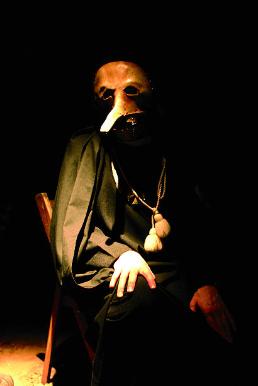|
Latest news / Cast and crew / Synopsis / Director's vision | ||
Director's vision Man Who Sold the World is a psychological horror for the Third Millennium.
Man Who Sold the World questions man’s perception of reality and time itself. The use of a fractured narrative and the slightly surreal storyline allows the director tremendous latitude on how he tells the story both in narration and pictorially. Visually Man Who Sold the World tips its hat to great British films like the now classic Wicker Man and the cult 1960s TV series The Prisoner. The film has a very set style in both design and colour palette. Add to this harrowing colour footage of the concentration camps and the somewhat bizarre colour footage of Nazis dressed as Knights Templar and naked women painted gold riding in torch-lit Nazi processions. It all adds up to a heady cocktail of the surreal, somewhat like the mind of the lead character Max. The aim is to make the audience permanently feel slightly off-kilter throughout the watching of the film, never quite knowing if what they are watching is reality or in Max’s mind. The film has a number of vocal and visual puzzles within the script. All these little touches will add to the mystery of the piece and garner more internet chat. Shifting the time period in which the audience thinks the film is set will, at times, also add to the audience’s perception of the film’s weirdness.
As the film’s writer and director, I personally can give three different meanings to the ending and what it tells us about the story. The intention is that the audience will find at least another five meanings as to what the film is really about.
In summing up, Man Who Sold the World, by taking the best of the new and adding a dash of the 1960s flair and experimentation, hopes to bring the cinema-going audience something new for the 21st Century. About the director Louis Melville entered the industry in the early 1980s as an actor, working in both TV and film in Europe and the USA. As the ‘80s went on, Louis moved more and more to the other side of the camera, first working with Martin Hooper on surreal visual photo concepts for Avantgarde magazine. By the ‘90s Louis had worked as an assistant director on a number of productions. His interest in writing led to his screenplays for But I am on Your Side, commissioned by Black Dragon Films, Sir Kit (a futuristic Arthurian children’s cartoon) and Who Pays the Ferryman. In the late 1990s Louis was working in advertising as a director of both commercials and music videos. The dawn of a new millennium saw Louis also move into producing as co-producer in 2003 of The Last Horror Movie, a co-production with Louis’ company Snake Hair Productions. This was followed by Cargo in 2004 and Safety in Numbers in 2005. Late in 2005 production started on Louis’ debut film as director/writer, the psychological horror fantasy Man Who Sold the World. This 90-minute feature which was shot on a low budget all over the south of England on HDV. Principal production was completed in October 2006 and the film is scheduled to premiere at Cannes in April 2007.
| ||

 It is a fractured narrative of a man’s mind embroiled in time and space, of the many dimensions of his mind and his place within his own universe.
It is a fractured narrative of a man’s mind embroiled in time and space, of the many dimensions of his mind and his place within his own universe. As for the ending, which can be described as somewhat ambiguous or even baffling - as were the endings of
As for the ending, which can be described as somewhat ambiguous or even baffling - as were the endings of 